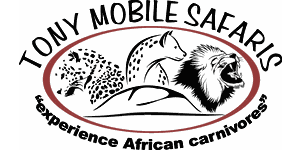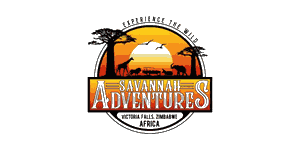Tour Length
Rates in USD $ – Change Currency
Per person, excl. international flightsOperator Rating
Other Tour Features
Filter by Operator
Filter by Accommodation
Chobe Camping Safaris
A camping safari in Chobe National Park is a once-in-a-lifetime experience. This vast wilderness is one of Africa’s top wildlife destinations. You can leave the logistics to the professionals when booking an organized trip or, if you’re feeling very adventurous, you might want to embark on a self-drive camping safari. The park has three distinct sections: Chobe Riverfront, Savuti and Linyanti Marshes (the latter is not to be confused with the private Linyanti Concession). Each area of Chobe has its own campsite. Most people visit the popular riverfront area, famed for its huge elephant herds and great general wildlife viewing. While staying in the park is very special, the riverfront area can also be visited from several campsites outside the park in or near Kasane.
-

8-Day Victoria Falls, Chobe & Okavango Delta Explorer
$2,728 pp (USD)
Botswana & Zimbabwe: Private tour
Mid-range Camping & LodgeYou Visit: Victoria Falls (Start), Chobe River, Chobe NP, Savuti (Chobe NP), Khwai Concession (Okavango Delta), Moremi GR (Okavango Delta), Maun Airport (End)

Moonstroll Vantage Expeditions
4.8/5 – 69 Reviews
-

10-Day Botswana Mobile Safari-Explore Africa
$5,357 pp (USD)
Botswana: Private tour
Mid-range CampingYou Visit: Maun (Start), Moremi GR (Okavango Delta), Khwai Concession (Okavango Delta), Chobe NP, Chobe Riverfront (Chobe NP), Kasane Airport (End)

Nyala Mobile Safaris
5.0/5 – 9 Reviews
-
Best Seller

9-Day Budget Camping Victoria Falls to Okavango Delta
$1,980 pp (USD)
Botswana & Zimbabwe: Shared tour (max 10 people per vehicle)BudgetCamping & Lodge
You Visit: Victoria Falls (Start), Chobe NP, Elephant Sands, Okavango Delta, Maun Airport (End)

Zambezi Expedition Travel and Tours
4.9/5 – 123 Reviews
-

11-Day Classic Okavango Safari
$6,050 pp (USD)
Botswana: Shared tour (max 6 people per vehicle)BudgetCamping
You Visit: Maun (Start), Moremi GR (Okavango Delta), Savuti (Chobe NP), Chobe NP, Kasane (End)

Early Kingfisher Safari
5.0/5 – 33 Reviews
-
![7-Day Camping Safari Khwai Concession, Savuti and Chobe]()
7-Day Camping Safari Khwai Concession, Savuti and Chobe
$2,965 pp (USD)
Botswana: Private tourBudgetCamping
You Visit: Maun (Start), Khwai Concession (Okavango Delta), Savuti (Chobe NP), Savuti Channel (Chobe NP), Chobe Riverfront (Chobe NP), Chobe NP, Kasane (End)

Shipungo Safari & Tours
4.9/5 – 87 Reviews
-
![7-Day Exceed Your Expectations About Nature]()
7-Day Exceed Your Expectations About Nature
$3,278 pp (USD)
Botswana & Zimbabwe: Shared tour (max 15 people per vehicle)BudgetCamping & Guest House
You Visit: Maun Airport (Start), Okavango Delta, Moremi GR (Okavango Delta), Savuti (Chobe NP), Chobe NP, Victoria Falls (End)

Tony Mobile Safari
5.0/5 – 92 Reviews
-

3-Day 2 Nights Tented Safari in Chobe National Park
$545 to $578 pp (USD)
Botswana: Shared tour (max 10 people per vehicle)BudgetCamping
You Visit: Kasane (Start), Chobe NP, Kasane (End)

Kalahari Tours
5.0/5 – 32 Reviews
-
![5-Day Savuti, Khwai and Mababe Safari]()
5-Day Savuti, Khwai and Mababe Safari
$2,673 pp (USD)
Botswana: Shared tour (max 6 people per vehicle)
Mid-range CampingYou Visit: Maun (Start), Mababe Concession (Okavango Delta), Savuti (Chobe NP), Khwai Concession (Okavango Delta), Maun (End)

Xaa Safaris
4.7/5 – 24 Reviews
-
![5-Day Moremi and Chobe National Park]()
5-Day Moremi and Chobe National Park
$1,650 to $1,760 pp (USD)
Botswana: Shared tour (max 6 people per vehicle)
Mid-range Camping & LodgeYou Visit: Maun (Start), Khwai Concession (Okavango Delta), Savuti (Chobe NP), Chobe NP, Chobe Riverfront (Chobe NP), Kasane (End)

Travel Creations Botswana
5.0/5 – 6 Reviews
-
![3-Day Chobe Buget Camping from Kasane]()
3-Day Chobe Buget Camping from Kasane
$1,155 pp (USD)
Botswana: Private tourBudgetCamping
You Visit: Kasane (Start), Chobe NP, Kasane (End)

Steenbok Safaris
4.9/5 – 8 Reviews
-
![3-Day Chobe & Moremi Safari Combo]()
3-Day Chobe & Moremi Safari Combo
$2,245 to $2,369 pp (USD)
Botswana: Shared tour (max 4 people per vehicle)
Mid-range Camping & LodgeYou Visit: Kasane (Start), Chobe NP, Moremi GR (Okavango Delta), Maun (End)

Knap Tours
5.0/5 – 13 Reviews
-
![7-Day Botswana Magic and Incredible Victoria Falls]()
7-Day Botswana Magic and Incredible Victoria Falls
$2,585 to $2,695 pp (USD)
Botswana & Zimbabwe: Shared tour (max 6 people per vehicle)
Mid-range Camping & LodgeYou Visit: Victoria Falls Town (Start), Chobe NP, Makgadikgadi Pans NP, Okavango Delta, Maun (City), Elephant Sands, Victoria Falls (End)

Africa Uncovered Safaris
5.0/5 – 66 Reviews
-
Best Seller
![8-Day Victoria Falls to Okavango Delta Camping Safari]()
8-Day Victoria Falls to Okavango Delta Camping Safari
$1,939 pp (USD)
Botswana & Zimbabwe: Shared tour (max 20 people per vehicle)BudgetCamping
You Visit: Victoria Falls (Start), Chobe NP, Elephant Sands, Okavango Delta, Maun Airport (End)

Africa Zim Travel & Tours
4.9/5 – 162 Reviews
-
![12-Day Makgadikgadi, Okavango, Chobe and Victoria Falls]()
12-Day Makgadikgadi, Okavango, Chobe and Victoria Falls
$5,033 pp (USD)
Botswana & Zimbabwe: Shared tour (max 9 people per vehicle)BudgetCamping & Lodge
You Visit: Maun (Start), Makgadikgadi Pans NP, Maun (City), Okavango Delta, Moremi GR (Okavango Delta), Savuti (Chobe NP), Chobe NP, Kasane (Town), Victoria Falls, Victoria Falls Airport (End)

DK Tours and Safaris
5.0/5 – 46 Reviews
-
![3-Day Two Night Safari Experience]()
3-Day Two Night Safari Experience
$550 pp (USD)
Botswana: Shared tour (max 12 people per vehicle)BudgetCamping
You Visit: Kasane (Start), Chobe NP, Kasane (End)

Asm Travel
5.0/5 – 92 Reviews
-
![8-Day Victoria Falls to Okavango Delta Safari Camp Tour]()
8-Day Victoria Falls to Okavango Delta Safari Camp Tour
$1,804 pp (USD)
Botswana & Zimbabwe: Shared tour (max 10 people per vehicle)BudgetCamping & Guest House
You Visit: Victoria Falls (Start), Chobe NP, Elephant Sands, Okavango Delta, Maun Airport (End)

Fuhara Safaris
4.7/5 – 9 Reviews
-
![14-Day Namibia, Botswana and Victoria Falls (Camping)]()
14-Day Namibia, Botswana and Victoria Falls (Camping)
$2,965 pp (USD)
Botswana, Namibia & Zimbabwe: Private tourBudgetCamping
You Visit: Windhoek (Start), Sossusvlei (Sand Dunes), Swakopmund (City), Etosha NP, Kalahari Region, Ghanzi (Town), Maun (City), Khwai Concession (Okavango Delta), Chobe NP, Victoria Falls, Victoria Falls Airport (End)

Safari World Tours
5.0/5 – 4 Reviews
-
![2-Day Express Chobe Land + River Safari with Camping]()
2-Day Express Chobe Land + River Safari with Camping
$345 pp (USD)
Botswana & Zimbabwe: Shared tour (max 6 people per vehicle)BudgetCamping
You Visit: Victoria Falls Town (Start), Chobe NP, Victoria Falls (End)

Savannah Adventures
5.0/5 – 48 Reviews
-
![2-Day Overnight Camping in Chobe National Park]()
2-Day Overnight Camping in Chobe National Park
$605 to $616 pp (USD)
Botswana & Zambia: Private tourBudgetCamping
You Visit: Livingstone (Start), Chobe NP, Livingstone (End)

HSM Adventures Tours and Safaris
-
![8-Day Botswana Buffalo Group Camping Safari]()
8-Day Botswana Buffalo Group Camping Safari
$1,689 to $1,848 pp (USD)
Scheduled Start DatesBotswana & Zimbabwe: Shared tour (max 12 people per vehicle)BudgetCamping & Lodge
You Visit: Maun (Start), Moremi GR (Okavango Delta), Savuti (Chobe NP), Chobe River, Victoria Falls (End)

Indigo Safaris
4.9/5 – 159 Reviews
6 Questions About Chobe Camping Safaris

Answered by
Ariadne van Zandbergen
Ariadne is a renowned Africa expert and photographer. She and her husband form a team who write and update many Bradt guides. She also contributes to travel and environmental magazines and tourist brochures. She has visited Botswana several times and she hopes to go back sometime soon.› More about Ariadne
6 Questions About Chobe Camping Safaris
 Ariadne van Zandbergen
Ariadne van Zandbergen
What are the pros and cons of a camping safari in Chobe?
“A camping safari is perhaps the most authentic way to experience Chobe’s wilderness. Sleeping under canvas and sitting around a campfire at night make you feel close to nature. Camping safaris can also represent very good value. There are some well-priced lodgings in Kasane, outside the park, but if you prefer to stay inside the park, close to the action, camping is really the only budget option. Of course, camping isn’t everybody’s idea of a holiday. Even on a well-organized camping trip, you need to be willing to make do without all the usual creature comforts. And while many people love the food prepared by the experienced camping chefs, meals are usually simple compared to the fare dished up in upmarket lodges.”
1What facilities can I expect to find in the campsites?
“The three campsites in Chobe NP are relatively basic. You get an allocated camping spot with a barbecue and access to an ablution block. The good news is that safari outfitters will bring everything to make your camping experience comfortable. Self-drive visitors need to be fully self-sufficient. There are several other campsites outside the national park, especially in and around Kasane. Some have a lovely location on the Chobe riverfront. These campsites usually have better facilities, especially when the grounds are affiliated to a lodge. Another advantage of staying in the Kasane area is that you have access to shops and restaurants.”
2Should I camp inside or outside Chobe?
“There are advantages in camping both inside and outside Chobe NP. Camping inside Chobe NP is a magical experience. There is one campsite in each section of the park (Chobe Riverfront, Savuti and Linyanti Marshes). All three campsites are in good locations, with fine views. Most popular is the Ihaha Campsite on the Chobe Riverfront. It’s a very convenient base for game drives in the wildlife-rich riverfront area, and you’ll even see lots of animals at the camp. Chobe is very popular with day-trippers staying in Kasane and coming from Victoria Falls (Vic Falls). Therefore the northern gate to the park gets very busy. When staying inside, you don’t need to line up to get in and you’re away from the crowds all starting their safaris at the entrance gate at opening time. There is, however, limited space in the campsites located inside the park, and you might have to book many months in advance to secure a spot. People with small children sometimes prefer to camp outside the park in a fenced campsite where kids can play freely without the danger of running into a wild animal. There are some other advantages to camping outside, such as easy access to restaurants and shops. Campers inside the park need to be fully self-sufficient.”
3How much will this safari cost?
“The price of a 3-day Chobe camping safari ranges from US$400 to US$650 per person. Time and budget permitting, consider a 4-day camping tour to the park to visit both the popular riverside area and the more remote Savuti area. This costs around US$850 per person. Longer camping tours usually combine Chobe with some other highlights of the area. Seven-day packages cost between US$1,300 and US$2,800 per person. There is always a range of prices for camping trips. Shared tours are a bit cheaper than private tours, but the latter are more flexible and tend to be customized to your preferences. With camping, as with most things, you generally get what you pay for. Operators that provide more comfort, such as bigger tents, better beds and mattresses, superior food and better vehicles, tend to charge more than the budget operators. So, always find out what you are paying for and ask to see photos of the camping setup.”
4Is staying in a tent safe around wild animals?
“The campsites inside Chobe NP are not fenced, which adds to the wilderness appeal. Staying in a tent in unfenced campsites is safe as long as you listen to the instructions given by your guide. It’s an amazing experience to see animals walking through camp. Elephant are regular visitors and so are many harmless smaller creatures such as bushbuck and warthog. Never underestimate baboons as these intelligent primates get inventive when it comes to stealing food. Predators are usually shy and stay away from human activity. During the day, the guides will keep an eye on what is around so they can warn you when necessary. That said, once everybody has gone to bed, a leopard or even a pride of lions might walk past, leaving only a telltale track of paw prints to be discovered the next morning. As long as you stay in your tent at night, you should be safe.”
5When is the best time for a camping safari in Chobe?
“Chobe NP can be visited at any time of the year, but camping is generally most pleasant in the Dry season from April to October. This is also the best time for wildlife viewing, particularly in the popular riverfront area. The end of this period, August to October, is incredible as huge herds of elephants come to drink at the river. However, October can be oppressively hot. Note, though, that some of the Dry season months fall in the high season (July to October) and the campsites are always busy at that time, especially those inside the park. Make sure to book long in advance. The remote Savuti Marsh area of the park is thrilling to visit in the Wet season, from November to March, when zebra and many other animals migrate here, although many trails can be muddy and quite difficult to drive on.”
6Chobe Reviews

Mark is a travel writer who grew up in Africa and has written over 700 titles for Condé Nast Traveller, Travel Africa, BBC Wildlife and others.
Spectacular landscapes, wonderful wildlife sightings and the 'gnarliest' elephants in Africa
We had been almost a month on a self-drive safari in Botswana and had had stunning wildlife sightings. The country had - once again - surpassed all expectations but we had one last aim. To see wild dogs would be the icing on the cake and we...

Emma is an award-winning travel writer for Rough Guides, National Geographic Traveller, Travel Africa magazine and The Independent.
Crowds of Elephants and Zebras, a Short Hop From Victoria Falls
I consider Chobe one of the very best safari destinations, not just in Botswana, but in the entire continent. Whatever the season, a game drive or a leisurely boat trip in this large and fascinatingly diverse park count among Africa’s...
We have been to Chobe before many years ago however this time our Leopard sighting made it very special even if we only went to the Savuti area. I would definitely have flown in given the choice as the roads are bad.
 US
US
Birders should absolutely do a boat cruise, it's a great way to see the water birds up close. Also a different perspective than the jeep so seeing the hippos, elephants, etc. from a different angle is great. We had incredible sunsets in...
Paradise on Earth
Myself and wife did a self drive in Chobe National Park beginning of May 2018. Oh my god! I've never experienced anything like it. We saw so many beautiful animals and it felt untouched. The highlight was getting stuck between a hunting...
 CA
CA
Second time in Chobe, amazing
We came to Chobe three years ago, in May. Saw very little, but still enjoyed ourselves. This time, hundreds of elephants, breeding herds of buffalo, hippo, croc, sable, lechwe, puku, tsebee and more. Some lions right by the side of the...




















_2196_5b631a3036ccc.gif)












